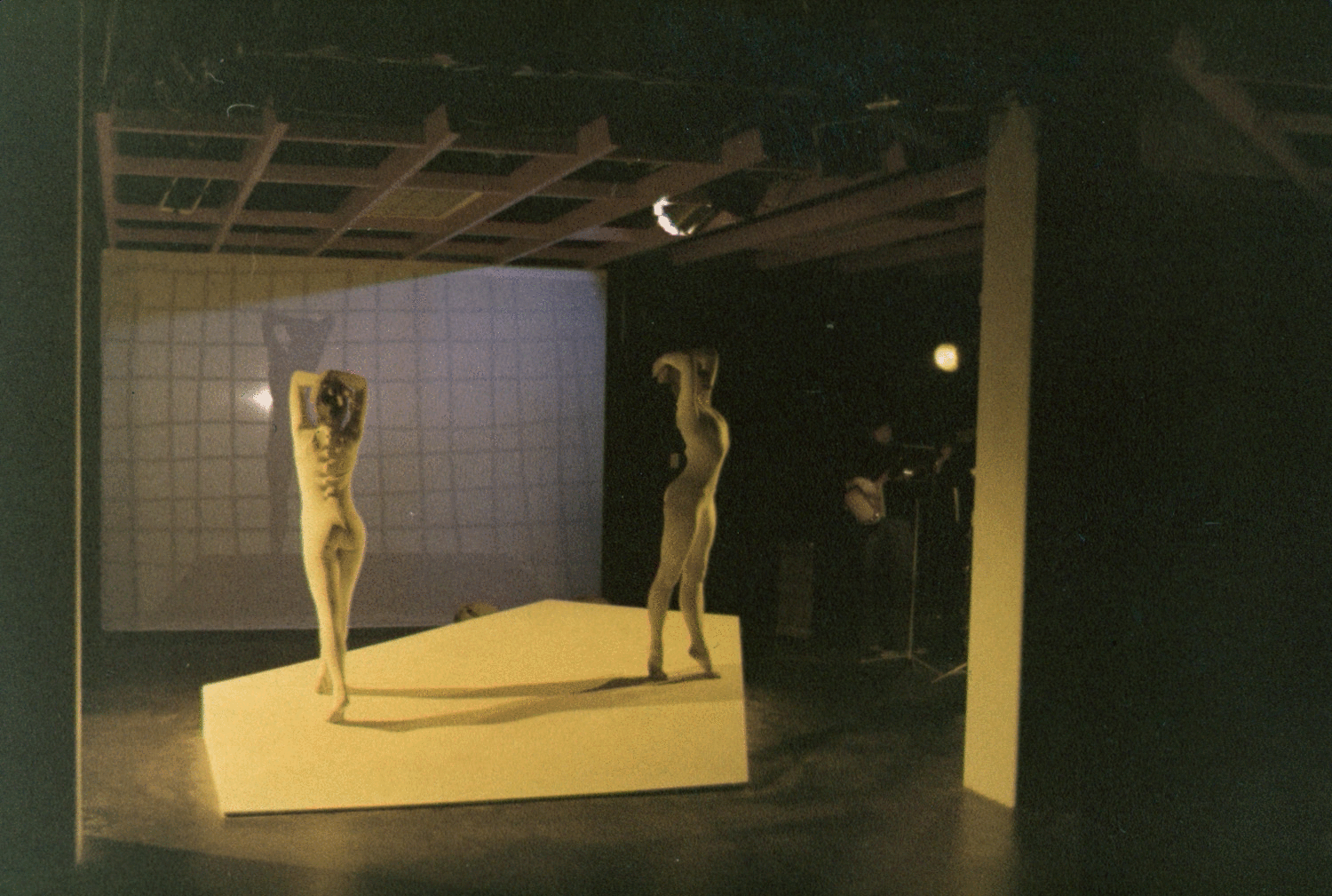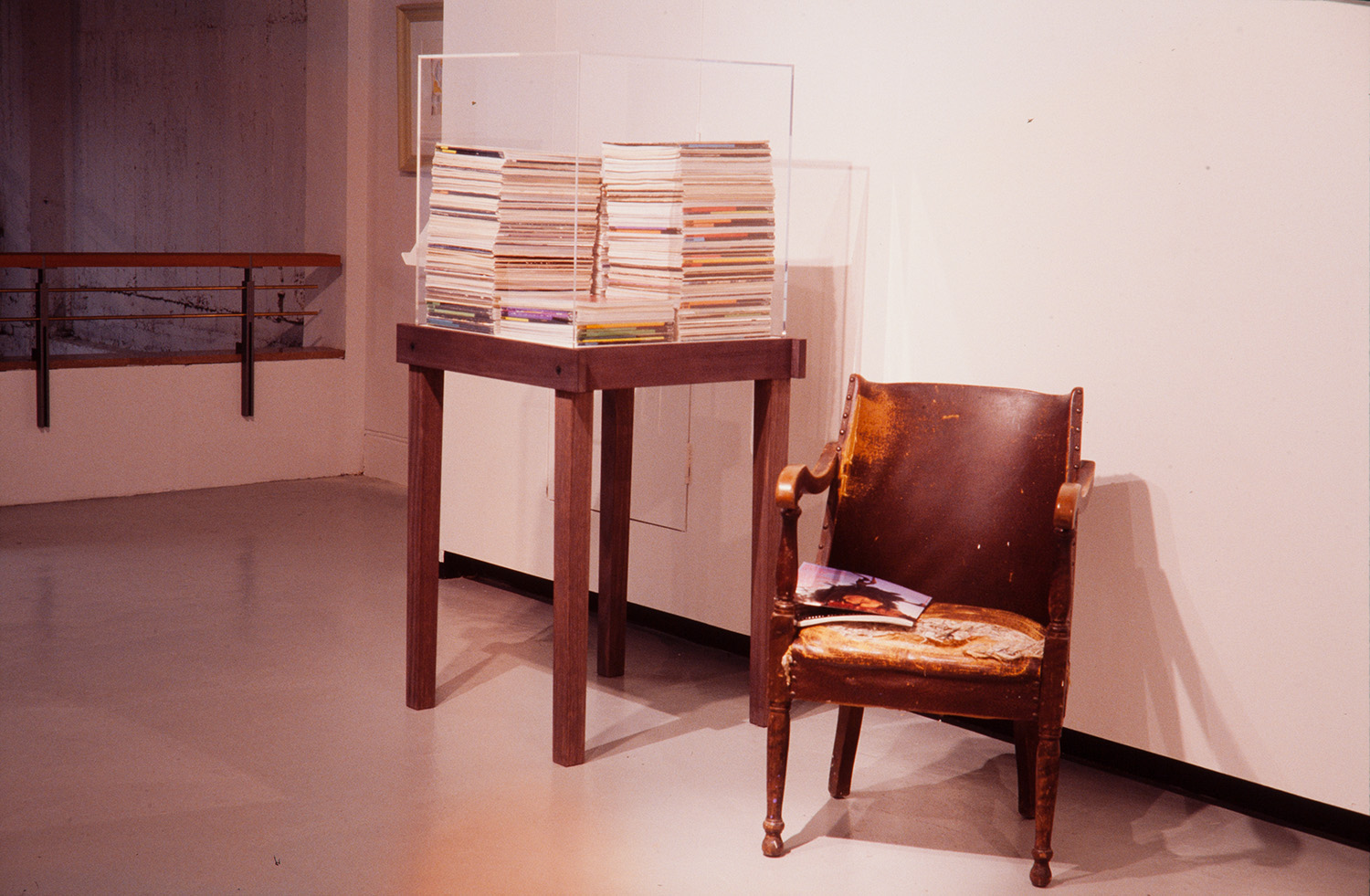
Every history begins in a moment. When City Gallery opened on 23 September 1980, it was of its time. The invitation was a foldout, hand-printed by Alan Loney on hand-made paper by Kay Billings; the gallery logo embossed on a jaunty angle on the cover. It read: ‘His Worship the Mayor of Wellington, Michael Fowler … requests the pleasure of the company of____.’
I started working in the Gallery’s archives in April last year. They’re in the basement. Without windows, it’s easy to lose track of time.
The exhibition records are stored in box files, arranged chronologically on wall-to-wall shelves. There are also filing cabinets of slides, plan drawers full of posters, stacks of video and audio tapes, copies of all our publications, and stuff no one can identify but which might be significant. It’s a jigsaw puzzle. My task is to make the Gallery’s history visible by publishing material from the archives on our new website—this website.
The archives are a time capsule. They chart changing approaches to art and exhibition making, but also include snapshots of changing opening-night fashions—shoulder pads ahoy! In my first week, I was amused to discover photographs of women in white leotards, their lithe bodies posed at jaunty angles. It was months before I deduced they were performing Imprints, the dance commissioned by Wellington City Council for the Gallery’s opening—a collaboration between artist Gordon Crook, choreographer Susan Jordan Bell, and musician Colin Hemmingsen. These images are among the many delights I’ve unearthed.
The archives also offer windows onto the admin and project management styles of earlier times. The 1980s are defined by handwritten and hand-typed letters on translucent blue paper—forget me not. By contrast, the 1990s are the zenith of the photocopier and fax. Files bulk up; info repeats, repeats, repeats; project plans and reports fill entire binders; corporate logos multiply. Then, in the 2000s, life migrates to online and hard copies and box files peter out.
A Lotteries grant is supporting the digitisation of our archives, particularly the scanning or photos and catalogues. Some of the exhibitions are already up, including material on crowd pleasers such as Yayoi Kusama: Mirrored Years (2009) and controversies like the Robert Mapplethorpe survey (1995). We’ve also covered important national shows including Parihaka (2000) and game-changers like Bottled Ocean (1994)—the Pacific Island art show that problematised the idea of ‘Pacific Islandness’. More is coming.

Times change. In 1995, our contemporary New Zealand export show Cultural Safety included Julian Dashper’s installation What I Am Reading at the Moment (1993)—a stack of old Artforum magazines and a well-worn leather chair (pictured above). It was a quip about the way we antipodeans once fetishised international art magazines, which were hard to get and already out of date. But distance no longer looks our way. And soon, the Gallery’s history will be available as a click, instantly, the world over.
Every archive has its omissions and blind spots, but we aspire to provide a thick and helpful record of the Gallery’s life and times. We welcome any feedback and corrections, suggestions and tweaks. Help us find the pieces; help us put them together.
—Megan Dunn

